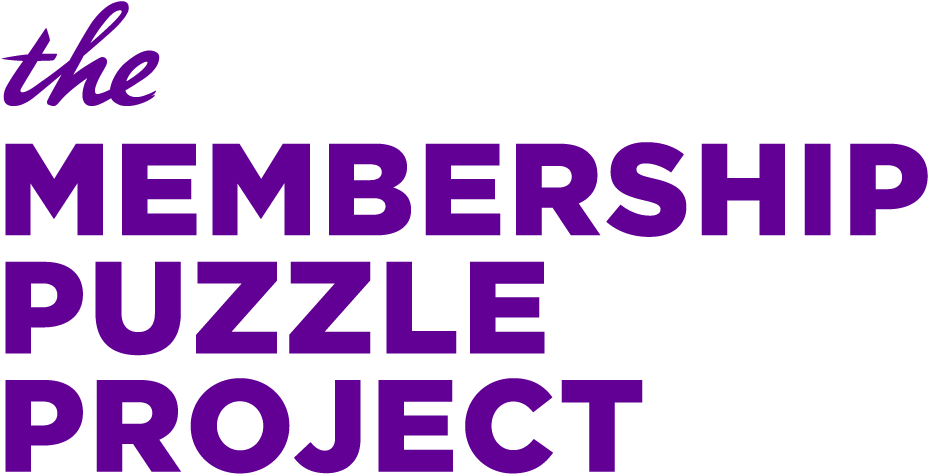Our Tools
The Membership Puzzle Project seeks to offer useful resources for journalism organization staff, freelancers, and consultants as they create new membership programs and/or revamp existing offerings. We’re especially eager to show examples that demonstrate meaningful two-way knowledge exchange between news sites and their members. We’re showcasing sites whose interactions with members benefit organizational sustainability and make for better journalism. These tools are works in progress, and we hope that you will provide additional examples and feedback throughout the course of our research.
The Membership Guide
The Membership Guide is a tactical, practical guide to implementing your membership strategy. It includes practical advice, step-by-step processes, and case studies to help newsrooms at any stage of their membership journey, whether you’re deciding whether to launch a membership program or
We also designed a newsletter course on membership based on the Guide. Each of the 14 lessons in the course walks you through a different stage of the membership journey and offers a take-home assignment for applying the lesson in your newsroom. You can start the course at any time.
How our coaches help newsrooms navigate their membership journey
A collection of recommended activities, readings, and exercises designed for people leading membership work in their newsroom and for consultants supporting newsrooms on their membership journey. Written by four Membership Puzzle Project coaches.
Our supporter survey question bank
We’ve compiled 75+ questions that your newsroom could include when surveying potential supporters. The question bank includes some basic best practices for surveying as well.
Our guide to setting up your membership tech stack
Getting the tech stack right is a daunting challenge if you don’t have an in-house technologist. Here, media consultant and former Membership in News Fund coach Emma Carew Grovum lays out key considerations for member-driven newsrooms trying to choose the right tools to manage their audiences.
Membership Models in News Database
This database presents information on wide-ranging news organizations and the ways they engage their audience members. It is not intended to be a representative sample. The goal of this database was to demonstrate how much of a movement membership was becoming in 2017, when we first began collecting the data. We stopped collecting data at the end of 2019.
You’ll see that it includes sites big and small as well as high variance in the social contracts between organizations and members. In the notes column, you’ll find coverage and case studies about organizations’ membership programs, and we hope you’ll share pieces that others might benefit from, too. We present the database for easy browsing on the topics that most interest you, and it’s acknowledgedly incomplete.
Read this post for more information on how we thought about this tool.
Membership in News Literature Library
Please find our compilation of academic and industry articles on historic and current interactions between journalists and the audiences they serve. You may also be interested in these resources:
- A full literature review with details at the social contract between news organizations and their readers, listeners, and viewers.
- A shorter set of “must reads” focuses on news production, audience measurement, and audience engagement.
- A set of needed ingredients for talking about trust in news.
Membership in Public Radio Database
This database presents information from a sample of 50 public radio stations’ sites across the United States and internationally. We reviewed each station’s website as a prospective member might to understand how stations define membership (and, in almost all cases, financially quantify it). You’ll notice differences in how stations attract and retain members as well as in the ways that individuals can contribute as station volunteers. Please see this post for a more detailed discussion of findings.
You’ll see stations ranging in size and scope and find moderate variations in their membership framing.
Methodological note: Our researcher determined clarity of information according to how easy it was to locate membership information as a new visitor to the station’s site and the level of detailed information provided. Sites that she ranked unclear had no available membership information. Sites that she ranked somewhat clear used language interchangeably or included vague descriptions (or, in a handful of cases, included other notable inconsistencies). Sites she denoted as clear or higher provided information that was easy to find and quickly understandable. Sites that she ranked very clear stood out: these sites used especially concrete information on their membership pages and/or included unique features, such as diagrams reflecting costs incurred to produce specific reporting.
You’ll see that thickness of membership evaluations ranged from non-existent (0) to very strong (4). Most stations fell somewhere in between. This was the most qualitative category included in the database, and our researcher evaluated what available information suggested about how members are communicated to. The difference between not strong (1) and somewhat strong (2) depended on whether members had opportunities to participate beyond donating money to the station.
The “volunteer engagement” assessment relied on our researcher’s review of a) the language stations used to attract volunteers, b) the designation of volunteers as members/non-members, and c) the number of ways that volunteers could participate beyond financial giving.

